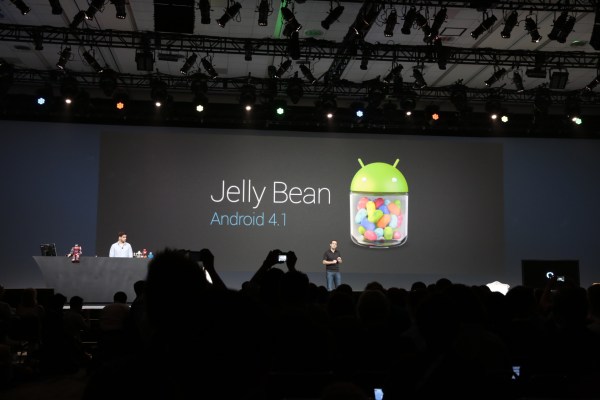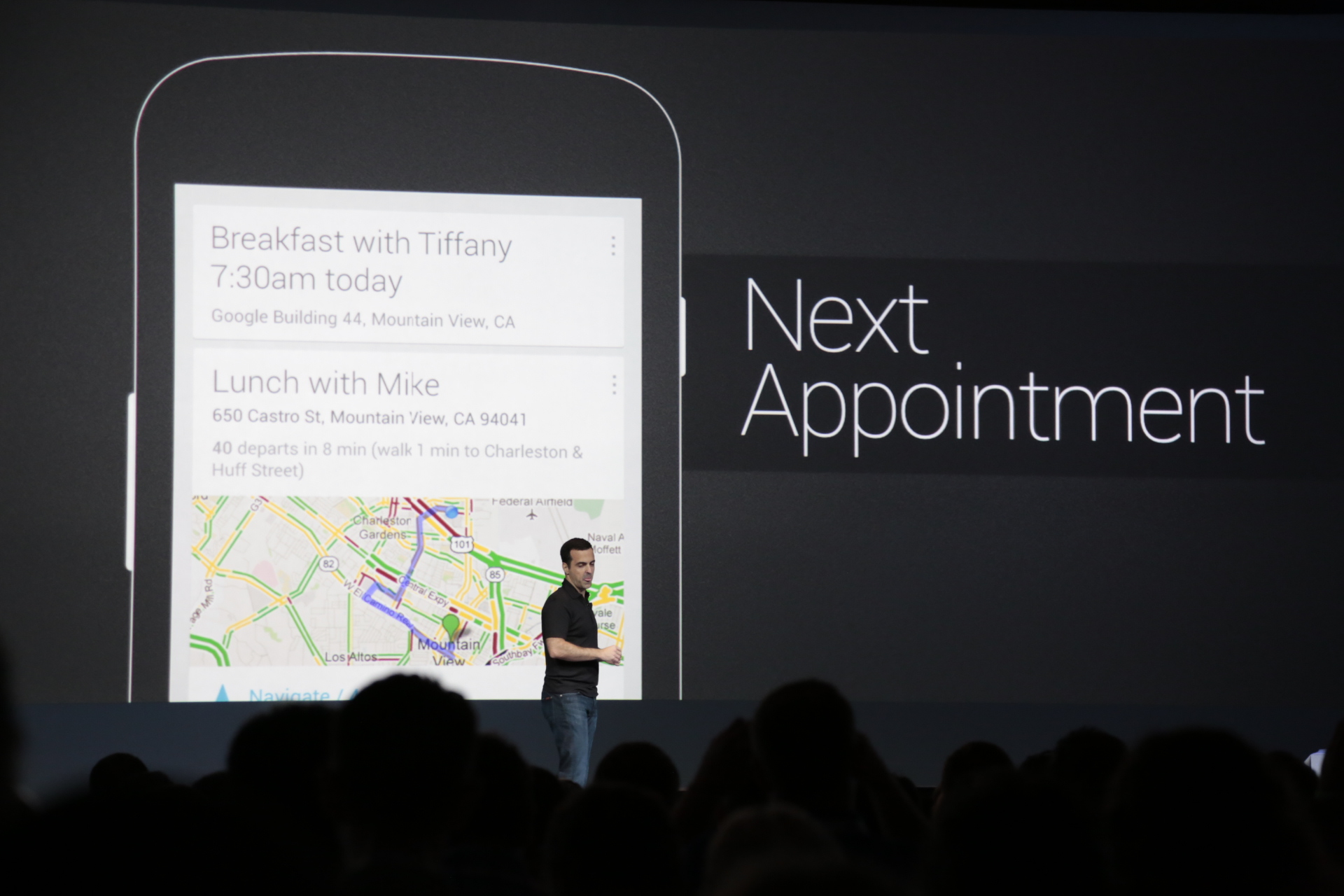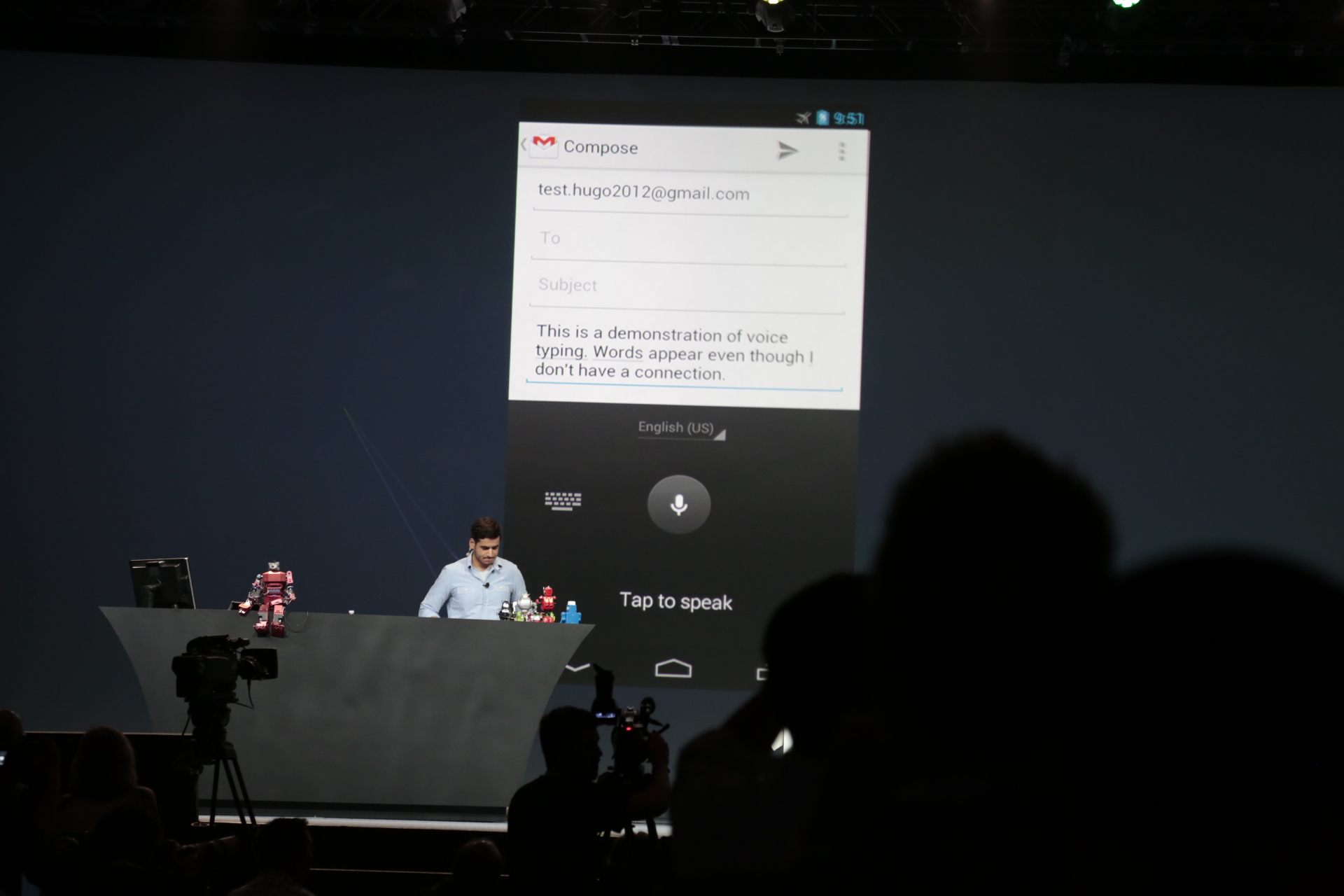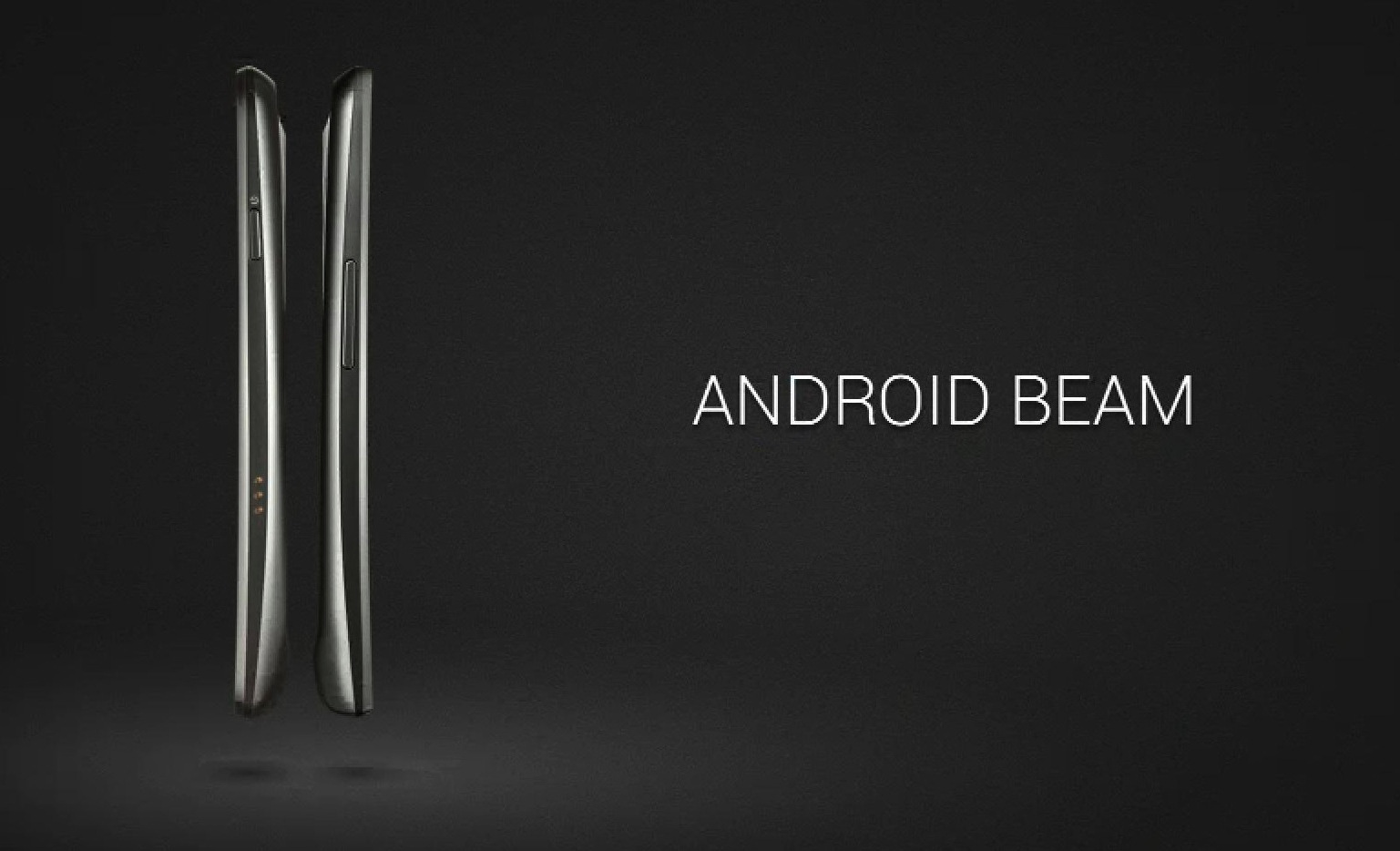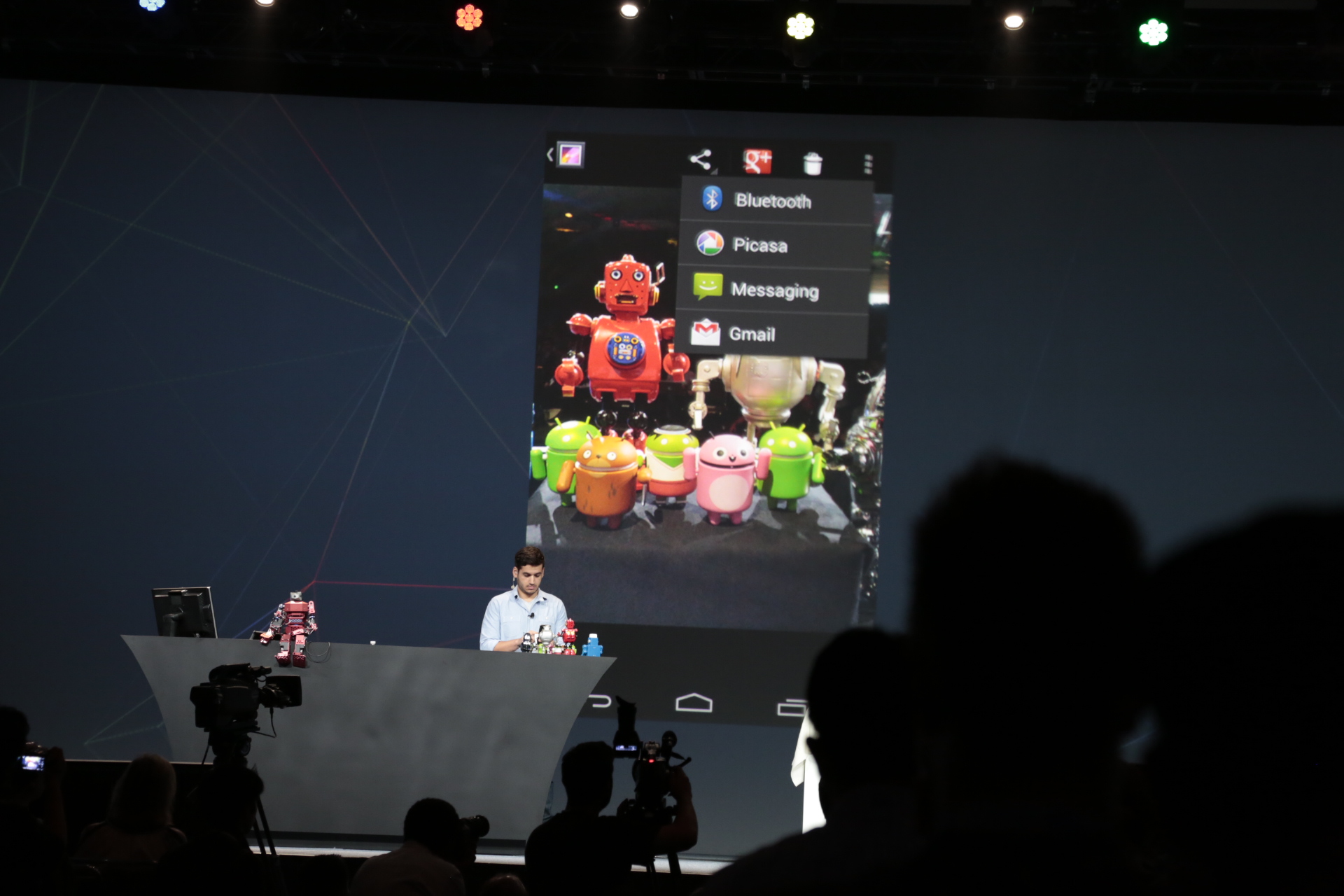Today Google announced the latest version of its mobile operating system: Android 4.1 Jelly Bean. It’s an incremental upgrade — a number of valuable features have been added, but there’s no real revamp to be seen. Still, these features are incredibly competitive, and in many ways threaten Apple’s latest mobile operating system, iOS 6.
Google’s voice transcription and search now has the look and feel of Siri’s UI, the camera app works in a more streamlined fashion with swipe to preview, and Google Now goes a step further than Siri to offer everything you need to know without you ever saying a word.
That said, here are the top five features of the new platform for your drooling pleasure. Check it out:
Google Now
Google Now is a sort of unifying service that takes everything the smartphone knows about the user, and everything the user’s previously wanted to know, and combines it to keep everything on track automatically. So, when you bring up Google Now by swiping up on the homescreen, you’ll see a list of various cards. These cards know what your day looks like, as Google Now pays attention to your usual route to work (and how long it takes to get there), the sports teams you like, your calendar, travel plans, and nearby places you might want to eat.
Knowing this, Google Now creates an array of cards that explain that it’ll take 20 minutes to get to work if the user takes their usual bus route, or that they need to leave now if you want to make their flight. Everything within Google Now communicates with the other pieces.
So picture this: you like to work out around 1pm every day, but you happen to have a 2pm flight. Google Now knows that it’ll only take you 20 minutes to get to the airport, and that your flight has been delayed to 3:30pm, letting you know that you can still get your workout in.
Basically, Google Now figures out the user based on search history, and gives everything a smartphone owner would normally get out of their device to stay productive, only Android now does it automatically.
Keyboard
Despite the fact that there’s a clear shift over to voice, the keyboard still remains one of the most important features on a smartphone. We recently saw none other than RIM debut a slick new predictive keyboard that knows what’s being typed based on context, and now Google has done pretty much the same.
The new Jelly Bean keyboard lets you get started by typing a word or two, and then based on what you’ve said, Android makes a few educated guesses on what your next word will be and offers them up as options before you’ve even started typing the next few words.
Voice text has also been significantly improved and pretty much kicks Siri right where it hurts: in the data. Google has shrunk down the voice transcription software to fit inside the device itself, rather than over the network connection. This means that users can type with their voice whether they have service or not.
Bravo, Google.
Notifications
Google has always been inherently better than Apple when it comes to Notifications, and today that only gets better. Essentially, actions can now be performed from straight within the drop-down notifications menu. So, if you’ve missed a call, you can text or call back that contact directly from the notification widget. The same holds true for liking or commenting on foursquare check-ins and other social media interactions.
All the new Gmail messages are available from straight within the notifications tab, which keeps users from having to switch back and forth between apps.
Perhaps the best part of the new Notifications menu is the ability to expand each notification. The top notification is always expanded by default, showing various available actions. But you can expand any notification by performing a two-finger swipe downward. As per usual, notifications can be deleted by swiping to the left.
Android Beam
Android Beam has been a feature in Ice Cream Sandwich for a while, but it has ended up being even more limited than Samsung’s NFC application S Beam. But Google has smartly added some new faetures to the application to keep you as future-friendly as NFC itself.
Android Beam now lets you tap your phone to any other NFC-enabled Android Beam phone to share photos and videos. You can also automatically pair any NFC-capable Bluetooth device, including speakers, headsets, etc., with your phone by simply tapping the phone against the device. “It’s that easy.”
Camera
The Jelly Bean camera app now lets users swipe for a quick preview of the last photo taken, but picture review gets even better. Users can continue swiping to see all photos taken, and pinch to shrink the gallery into a film strip UI, allowing users to navigate to the right image quickly.
You can swipe a particular picture from the film strip away to delete it, but in case it was a finger spasm or some other sort of misstep, you can always hit undo to get the image out of the trash can.
A Few Thoughts
There’s no doubt that this is the best version of Android that we’ve ever seen, as it should be. But in many ways, it feels like Google is playing catch up. I know. I know. Phandroids will scream that iOS is just a rip-off of Android, and fanbois will say the opposite. But after five years, all these companies are clearly learning from each other and building off of features that are already out in the world to try and come out on top.
With Jelly Bean, there are quite a few new features that feel very similar to things we’re seeing on iOS 6. For example, these new search cards that come up after performing a Google search are strikingly similar to the cards Siri pops out when you ask her a question. Sure, they’ve been dressed up in Google garb, but the feature itself is essentially meant to keep Android’s voice functionality on par with Apple’s.
Even Google Now encroaches on a number of iOS features like the Reminders app and Apple’s new Maps application. In fact, Google Now beats Apple down like a redheaded step child. It all comes back to automation. I wouldn’t be surprised if Apple found a way to learn about you based on Siri inquiries and other actions to create a centralized productivity hub soon.
The camera update to Android is a good one, but we’ve seen swipe to preview for a while now. iOS 5 has it, WP Mango had it since inception, and even a few OEM skins offer it, like Sense. In fact, Sense already has that film-strip style navigation within the photo gallery, though you don’t have to pinch to activate it. You simply swipe a few times and Sense knows you’re looking for an image way on down the line, and simply makes the transition to film-strip for you.
I also find the Android Beam updates a bit underwhelming. The Samsung Galaxy S III leverages NFC in a much more fully functional way with S Beam, and other manufacturers are joining in on the NFC fun too. Sony has its own NFC sticker automation tool, and Windows Phone 8 is getting amped up for NFC, too. It’s soon to be a crowded space, and whoever gets out in front early will be glad they did. Unfortunately, it seems as though Google’s already lost its lead with regards to the software side of things.
